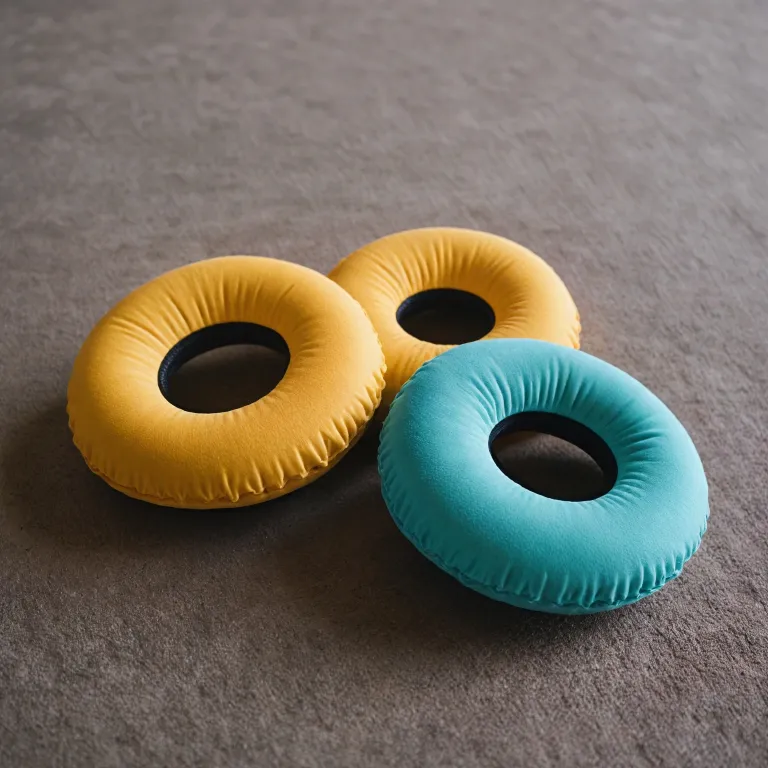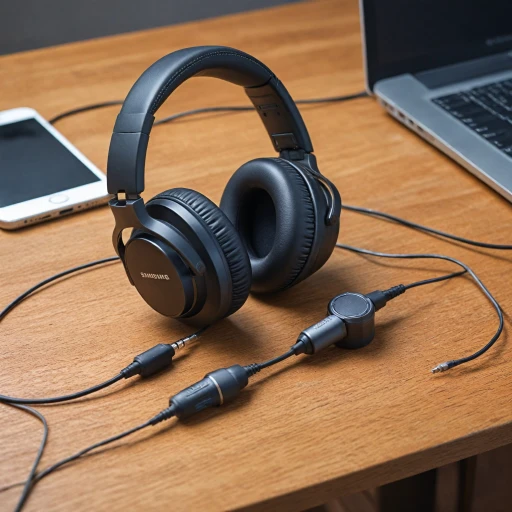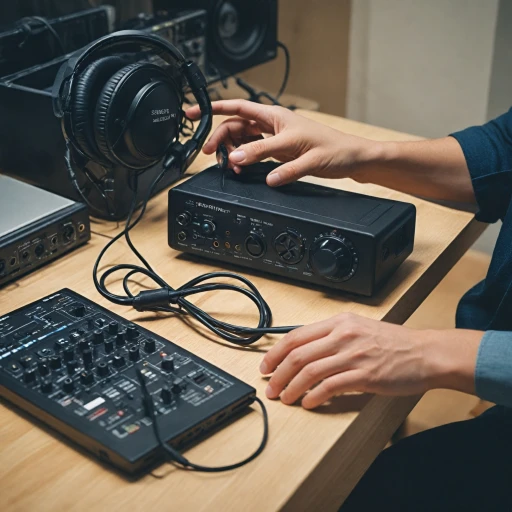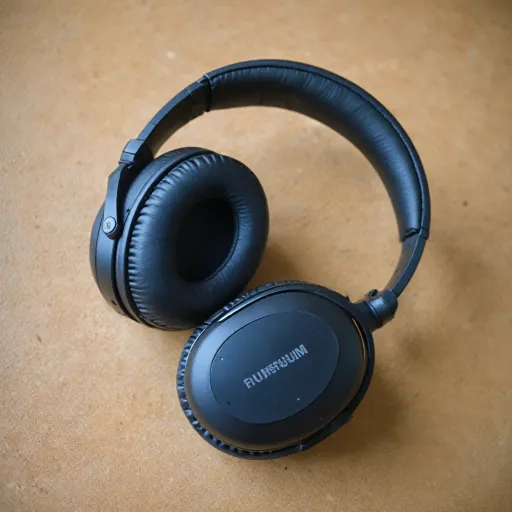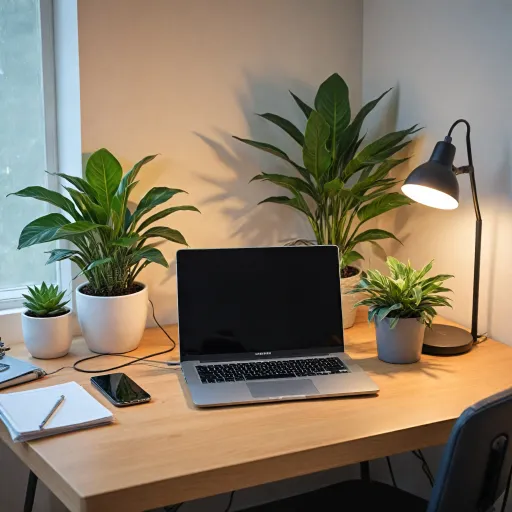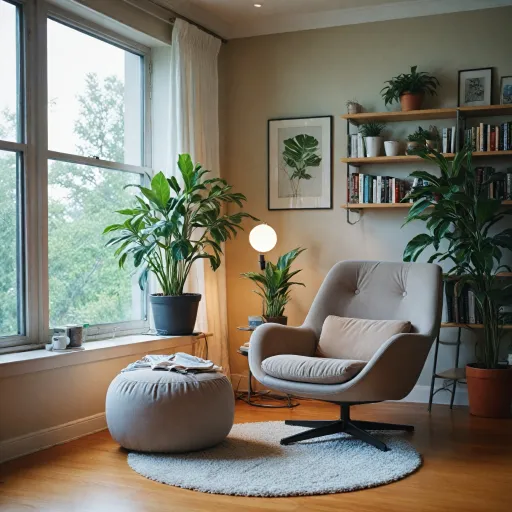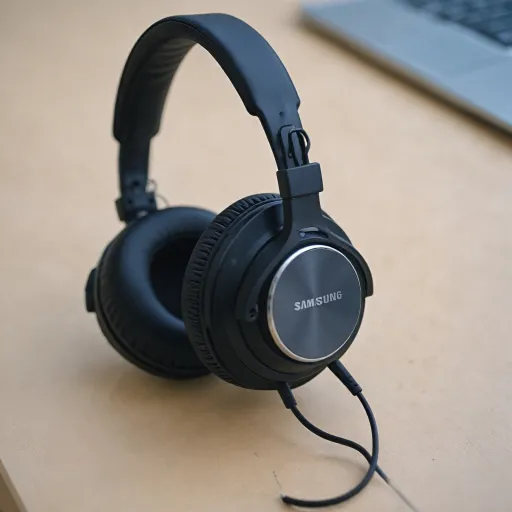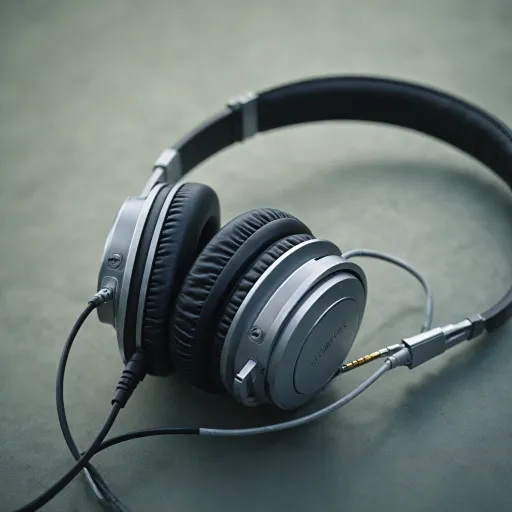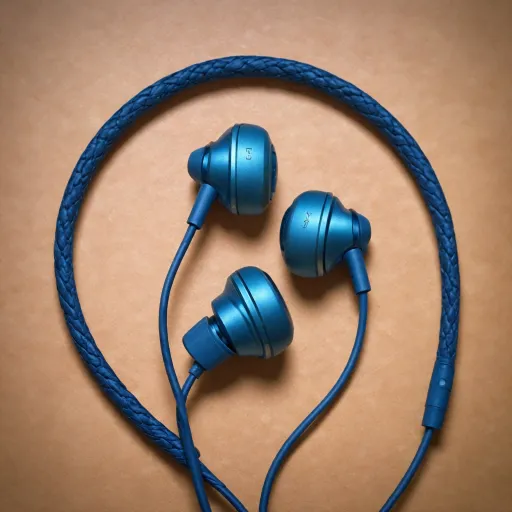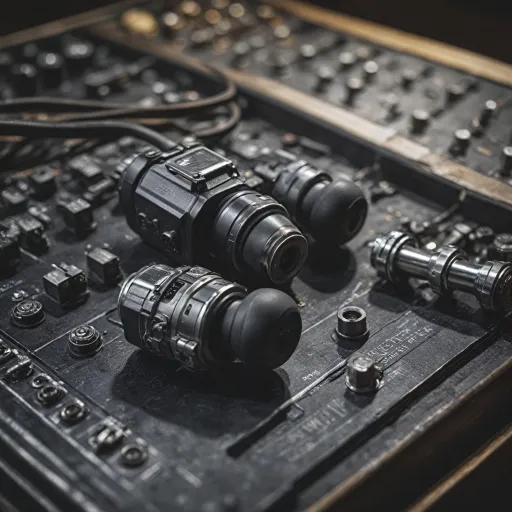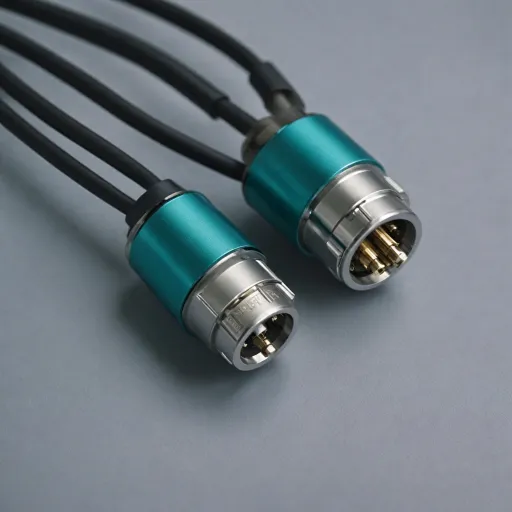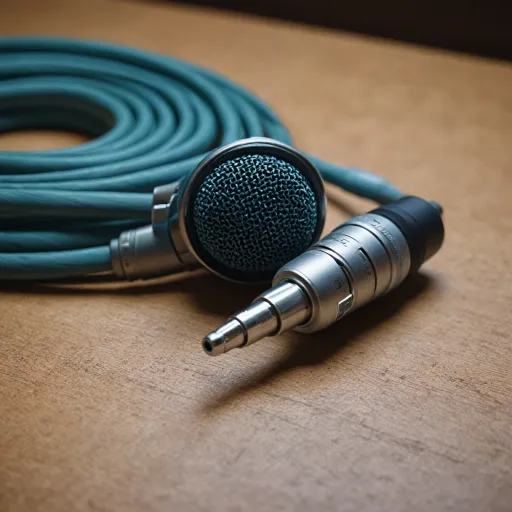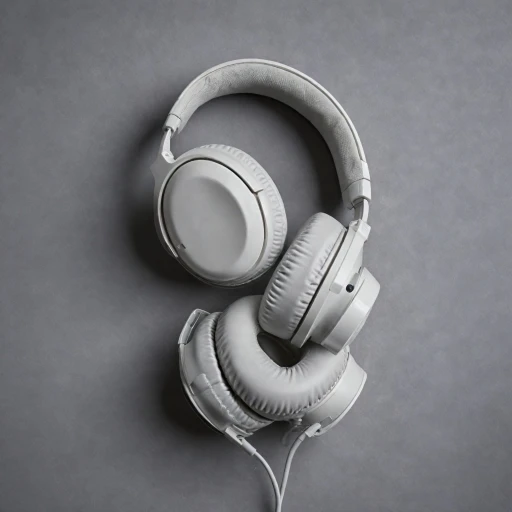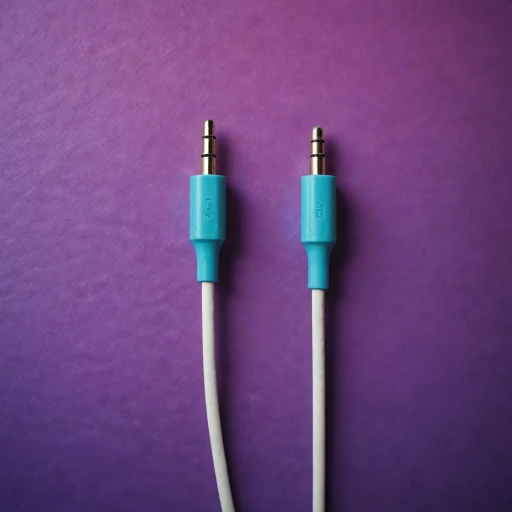
Understanding Noise-Canceling Technology
Decoding the Science Behind Noise Cancellation
Noise-canceling headphones have revolutionized the way we experience audio, effectively letting us shut out the world and immerse ourselves in sound. But what exactly is happening when you turn on those SONY headphones or adjust your wireless headset? Understanding the mechanism of noise-canceling technology can help you appreciate the subtleties of your audio experience and highlight why investing in quality headphones and the right replacement components, like ear cushions, is paramount.
At the heart of this technology are processes that detect ambient sounds and produce anti-noise signals to counteract them. Noise-canceling headphones utilize microphones to pick up low-frequency noise, like the hum of a jet engine, and create sound waves that are 180 degrees out of phase with that noise. What results is an annihilation of these external sounds, providing a quieter listening environment.
There are two primary types of noise cancellation: passive and active. Passive noise cancellation happens through physical means, where components such as thick, soft, memory foam ear cushions, often found in Sennheiser headphones, provide a seal around your ears to block noise. Active noise cancellation requires power (like a USB charge or battery), utilizing electronic processing to further cancel out noise.
It's crucial to note that the effectiveness of this technology can heavily depend on the quality and condition of the headphone components. Over time, the ear pads, especially if they're not maintained or are worn, can affect the seal and disrupt passive noise cancellation. Replacement parts, like leather or cooler gel ear pads, may enhance comfort and ensure an enduring noise-canceling performance.
For more on why these replaceable parts matter, you can read about the importance of replaceable headphone pads.
The Role of Ear Cushions in Noise Cancellation
Importance of Ear Cushions in Noise Cancellation
Ear cushions play a critical role in optimizing noise-canceling technology. They create a seal around the ears, minimizing external noise and enhancing the overall sound quality. The type and quality of the ear cushions can significantly influence the performance of your noise-canceling headphones.
Exploring the benefits of headphones with replaceable ear pads can illuminate how these essential components contribute to a superior audio experience.
Material Matters
Ear cushions come in various materials, each offering distinct advantages.
- Memory Foam: Known for its comfort and ability to conform to the shape of your ears, providing superior noise isolation.
- Leather: Offers a stylish, premium feel and is often favored in high-end headphones.
- Cooling Gel: Ideal for extended listening sessions, as it helps keep your ears cool.
Cushion Types and Compatibility
When selecting replacement ear cushions, consider compatibility with your specific headphones model, whether they are wireless headphones, USB headsets, or brands like Sennheiser or Sony headphones. Replaceable ear pads available on the market offer varying thickness, from thicker memory foam pads to soft gel varieties. Pricing can vary, with some cushions offered at a sale price making them a cost-effective solution for enhancing your headset performance. Checking customer reviews and star ratings can guide you to the best choice for your needs.
Signs It's Time to Replace Your Ear Cushions
Recognizing the Need for New Earpads
Noise-canceling headphones are a worthwhile investment providing users with an immersive audio experience by minimizing unwanted ambient sounds. However, even the best headphones require timely maintenance for optimal performance. A critical component that often determines how well noise-canceling works is the condition of the ear cushions. Worn-out or damaged ear cushions can significantly affect the efficacy of noise cancellation. Audible signs and physical wear indicate it's time for replacement ear cushions. Here are some signs to look out for:- Reduced Comfort: Over time, the cushion’s foam may lose its resilience, making it less comfortable. Memory foam, leather or gel earpads are particularly prone to compressing with regular use.
- Decreased Noise Isolation: If surrounding noise seems more intrusive than before, it may indicate volume loss in the cushioning, which should tightly seal around your ears.
- Visible Wear and Tear: Cracks or peeling on leather earpads or thinning in foam is a clear call for a change.
- Unpleasant Odor: A lingering smell can develop in some materials, especially if cleaning has been neglected.
Choosing the Right Replacement Ear Cushions
Selecting Your Ideal Replacement Ear Cushions
When it comes to enhancing your headphone experience, choosing the right replacement ear cushions is crucial. With the vast array of options available, the task can seem daunting, but focusing on a few key factors can simplify the decision-making process.
- Material Matters: Ear cushions come in various materials such as foam, leather, and memory foam. Foam and memory foam provide a comfortable fit, while leather adds a touch of luxury and is often more durable. Consider your priority between comfort and durability.
- Cushion Thickness: Thicker memory foam ear pads can enhance comfort and improve noise isolation, ideal for those long listening sessions.
- Cooling Gel Infusion: For those who find headphones hot and uncomfortable during use, cooling gel infused ear pads could provide the extra comfort you need.
- Compatibility: Not every ear cushion fits every headset. Verify the compatibility with your specific brand, like Sony headphones or Sennheiser headphones, to ensure a proper fit.
- Price vs. Value: Compare the regular price against the sale price, but also factor in customer feedback and reviews. A well-reviewed product, possibly with five stars, often signifies a good investment.
- Style and Aesthetics: Though function is essential, personalizing your headphones with a stylish cushion choice can reflect your personality and style.
Remember, investing in suitable replacement earpads is not just about comfort. It can significantly contribute to the overall performance and longevity of your noise-canceling headphones. Delve into customer reviews to gather insight from others' experiences, ensuring your choice aligns well with your needs and expectations.
Installation Tips for Replacement Ear Cushions
Effective Steps to Install Your New Ear Cushions
Replacing your headphone ear cushions might seem daunting, but with the right approach, it becomes a straightforward task. Here’s how you can ensure a seamless replacement process:- Gather Necessary Tools: Before starting, make sure to have your replacement ear pads ready, along with any accessories that may have come with them. Depending on your headphone model, you might need a small screwdriver or tweezers.
- Remove Old Ear Cushions: Gently pull away the old ear cushions from the ear cups. To avoid damage, start from a corner, applying equal pressure as you work around. Some models might have a specific release mechanism, so it's always best to check for manufacturer instructions.
- Prepare the New Cushions: Unpack your new cushions, ensuring they are the right fit for your headset. Whether you have cooling gel pads, thicker memory foam, or soft leather, check that all pieces are intact.
- Align and Attach: Carefully align your replacement ear cushions with the ear cups cover. Most cushions have a groove or lip that snaps into place around the cup. Gradually work them into place, ensuring an even fit.
- Secure and Test: Once attached, lightly press around the edges to ensure a secure fit. Connect your headphones via USB or go wireless to test the comfort and sound quality of the new pads.
- Seek Guidance: If any difficulty arises or if they don't fit snugly, consult specific customer reviews or reach out to the manufacturer's help section for guidance. Its reviews may even offer insights into specific models like sennheiser headphones or sony headphones.
Maintaining Your Headphones for Longevity
Protect Your Investment with Proper Maintenance
Taking care of your noise canceling headphones is crucial to extend their longevity and maintain optimal sound quality. Here are some tips to ensure your headset remains in pristine condition:
- Regular Cleaning: Gently wipe down your headphones with a soft, damp cloth. Avoid excessive moisture, especially around electrical components like the USB port and wireless mechanisms.
- Keep Ear Cushions Fresh: Your ear cushions or ear pads, whether they're foam or leather, should be cleaned regularly to prevent build-up of dirt and oils. Replacement ear cushions might eventually be necessary, but regular cleaning can prolong their lifespan.
- Proper Storage: Store your headphones in a case when not in use. This protects them from dust and prevents accidental damage to the foam and memory ear pads.
- Avoid Extremes: Keep your headphones away from extreme temperatures. High heat or severe cold can alter the materials of ear cushions or memory foam, impacting performance.
- Check for Wear: Routine checks can identify when replacement ear pads are needed. Cracks in leather or loss of cushioning are signs it's time to consider new ear cups or cushions.
Remember, investing in proper maintenance can save you from frequent replacements and maintain the quality that brands like Sony, Sennheiser, and others are known for. Customer reviews often reflect the importance of this care, with high stars given to products backed by attention to detail.
